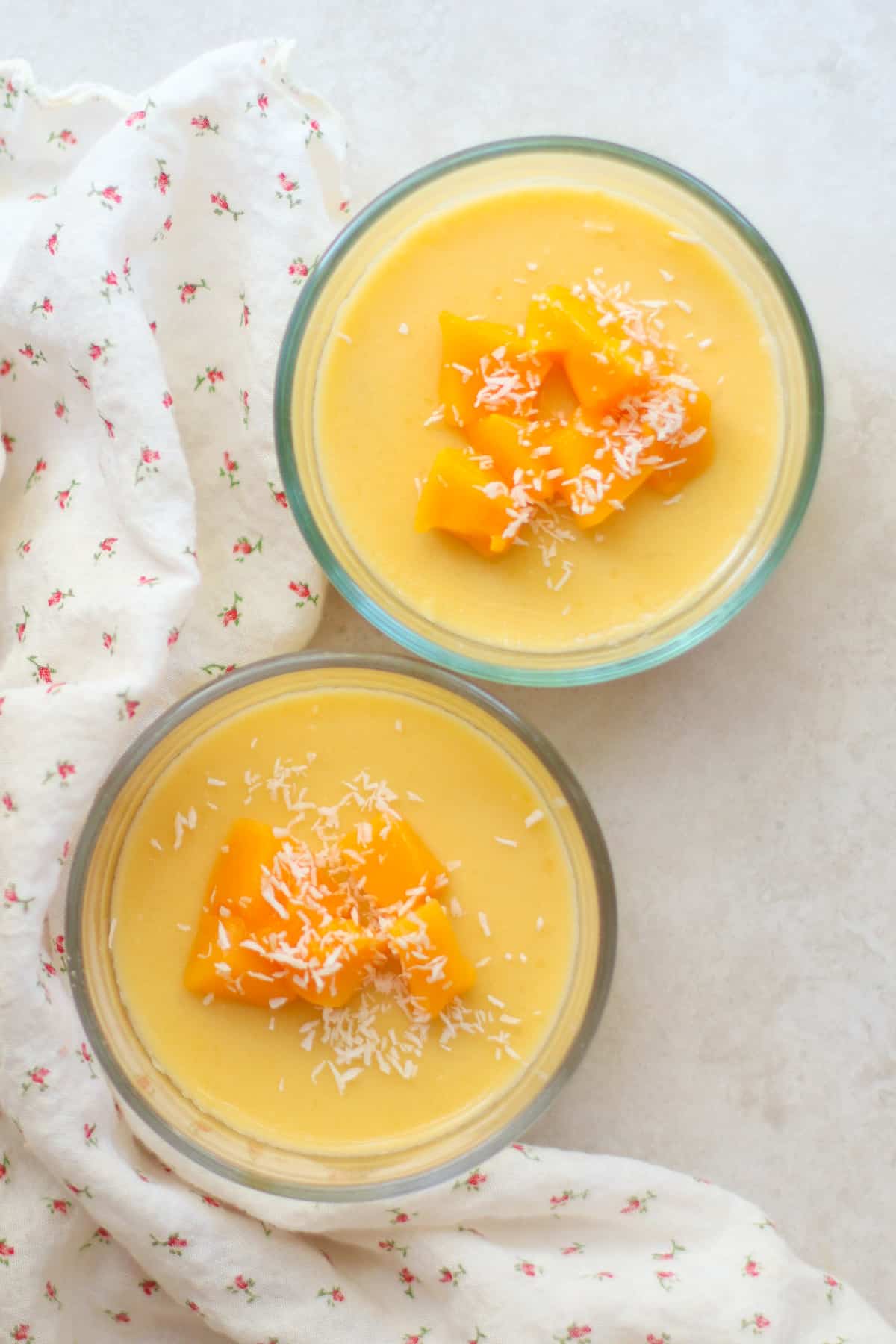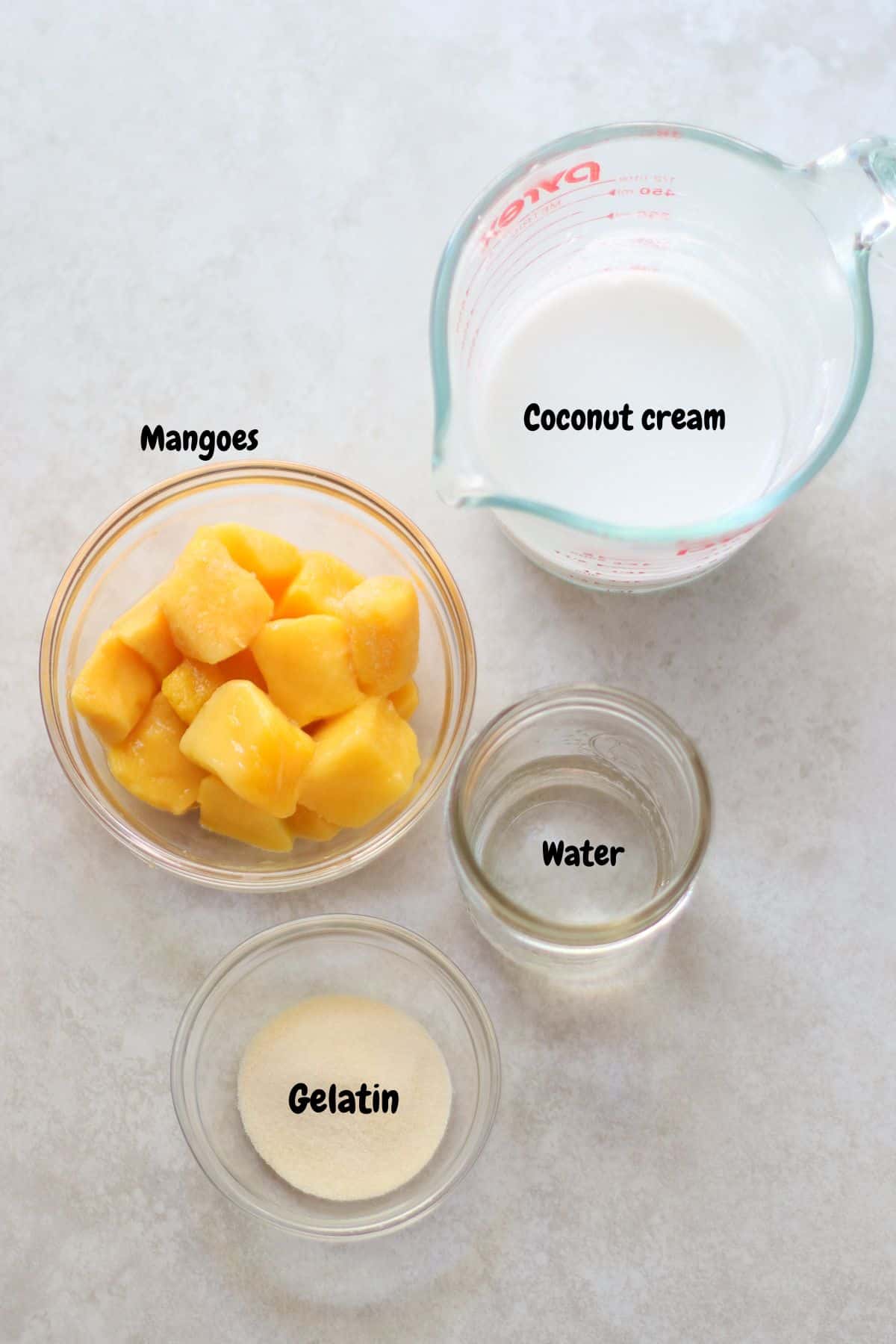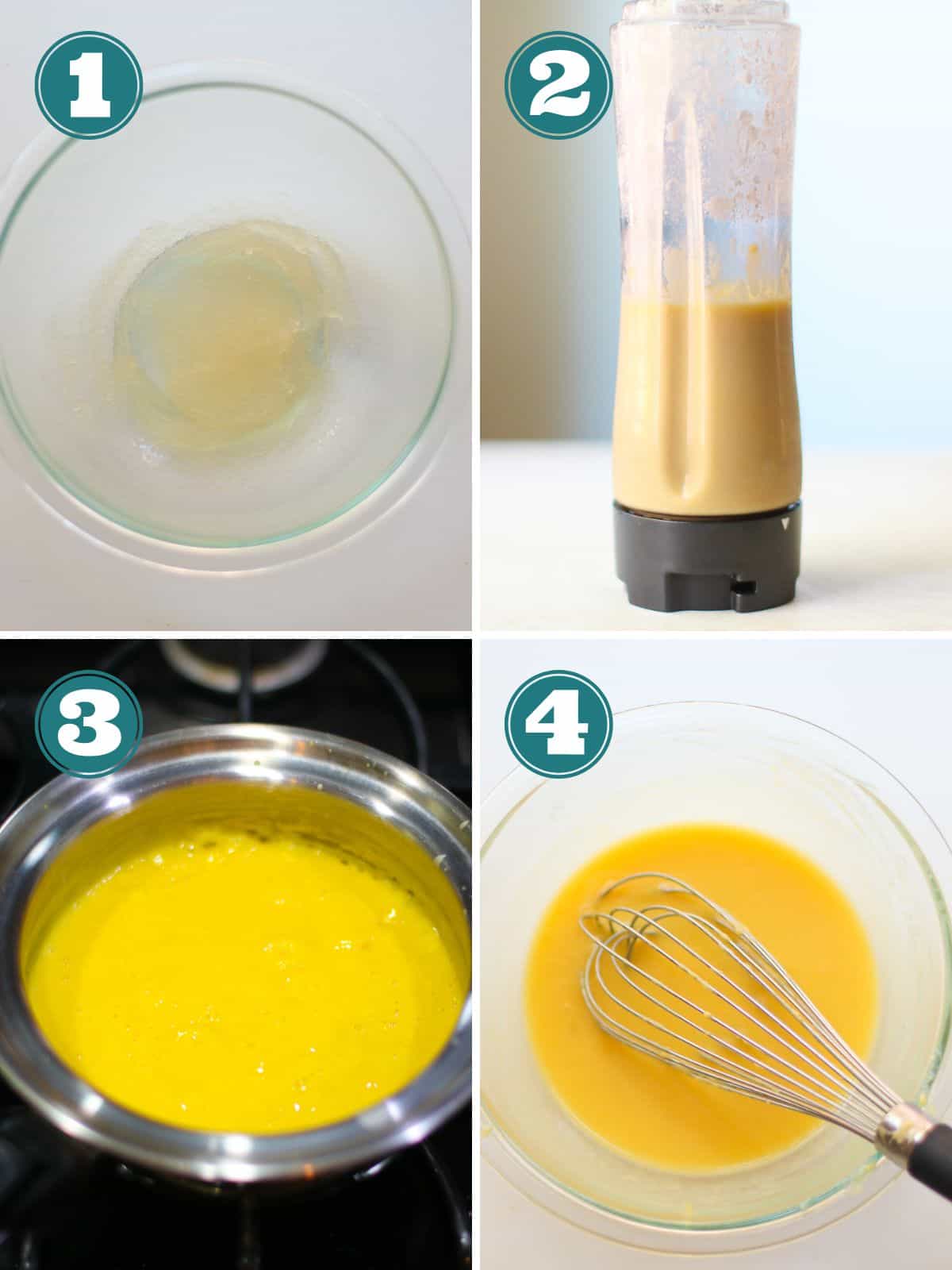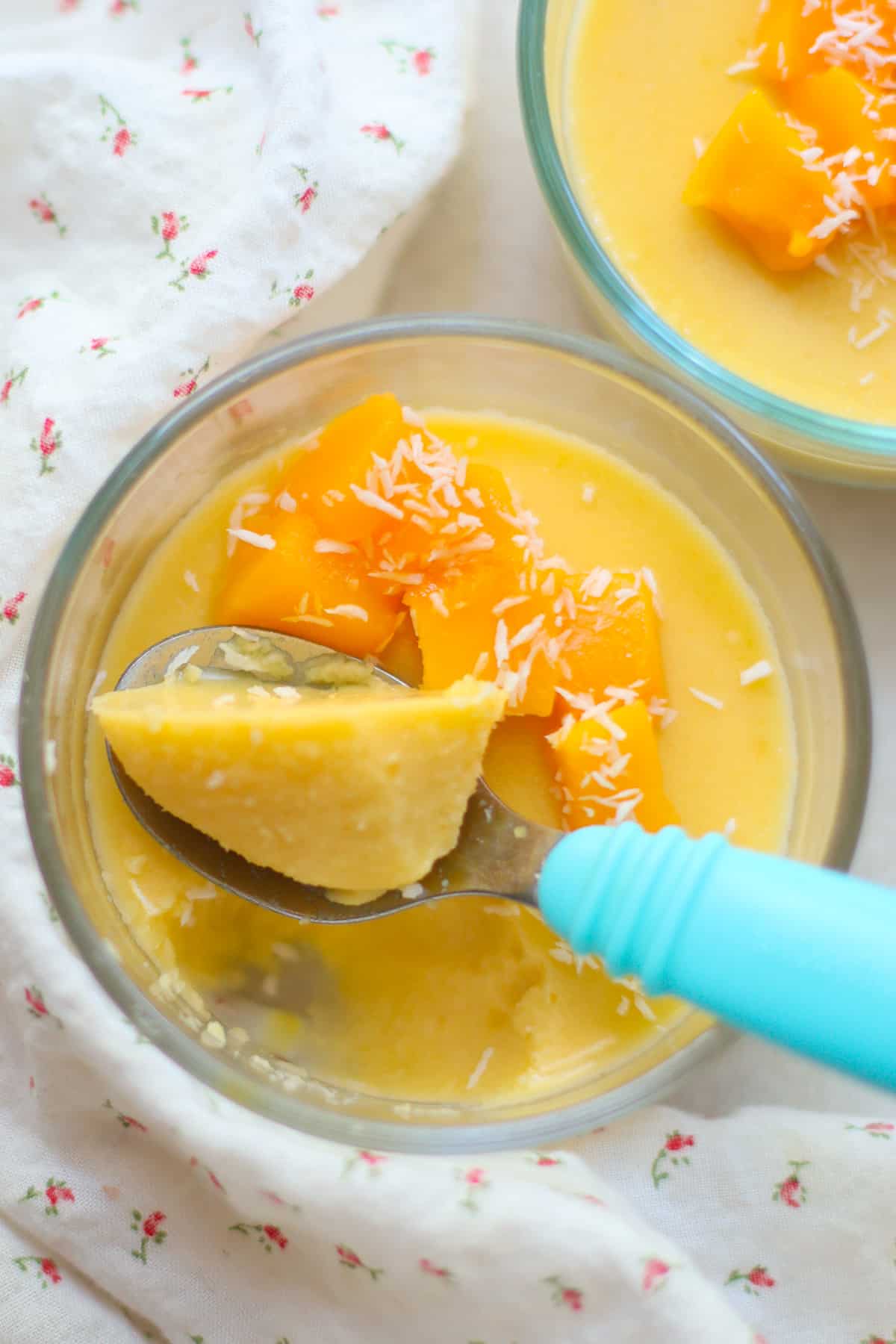What is a Mango Pudding?
Mango pudding is very popular dessert in Asia, particularly in Hong Kong. It is believed to have been created during the British colonial era, when British influences mixed with local culinary traditions. Despite its name, it is more like a custard than what is commonly referred to as pudding in Western cultures. It is soft and tender, but firm enough to hold its shape when sliced or scooped. Mango pudding is usually served in individual portions, often molded into small cups or ramekins. It is one of my favorite desserts dim sum restaurants, although I haven’t been to one in a very long time because dining out at restaurants with two littles is absolutely exhausting! Perhaps you can relate. So I make it at home and it’s been just the best thing! It’s seriously the perfect dessert or snack for toddlers, kids, and adults alike! And if you’re looking for other fun ways to enjoy this tropical fruit, you must try these mango popsicles , mango shake, or healthy homemade gummies!
Ingredients
Fresh mangoes – I recommend alphonso, ataulfo, or manila mangoes, if available, as they are super sweet and have a smooth, non-fibrous texture. You can also use mango pulp. Coconut cream – this provides incredibly creamy and rich texture. You can also use evaporated milk or condensed milk. While canned coconut milk will work, your pudding won’t be as creamy. Gelatin powder – I like to use this grass-fed beef gelatin. I’ve been consuming it on a regular basis in hopes of improving my digestive health and skin. But feel free to use your favorite gelatin.
Step-by-Step Instructions
Tips for Success
Use fresh ripe mangoes, if possible, for best flavor. Here’s how to pick the perfect mango from the store. However, you can use frozen mangoes. Be sure to thaw first. Dissolve the gelatin in COLD water first. If you add to hot water, it will clump up. Stir a couple of times and let it sit to allow for it to bloom or hydrate. Depending on your blender, you may need to strain the mango puree in a fine-mesh strainer to remove any fibrous, stringy bits. Follow the recipe as is first, and if you desire a slightly softer and more delicate texture, use less gelatin the next time.
Storage
Refrigerate in an airtight container for 2-3 days for best flavor and texture. The longer it sits in the fridge, the more its texture may change. I wouldn’t freeze this as the gelatin may not set as well upon thawing. Did you make this recipe? Leave a rating below and let me know how you liked the recipe! Your feedback means so much to me!





